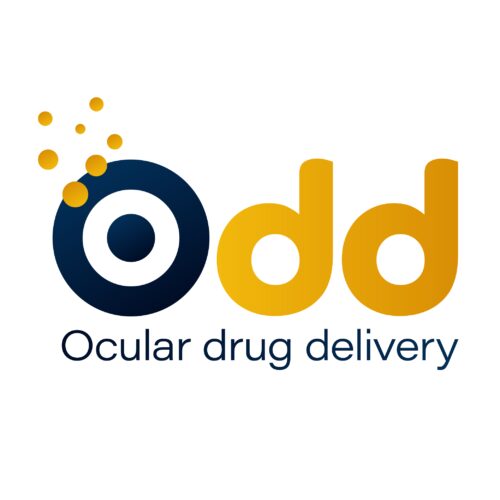
Ocular Drug Delivery group (ODD)
Leaders
The Ocular Drug Delivery (ODD) group develops advanced drug delivery methods for targeted and prolonged drug delivery to both the anterior and posterior segments of the eye. Furthermore, we use computational tools for drug development and preclinical-to-clinical translation to build a quantitative understanding of ocular pharmacokinetics and pharmacodynamics.
We are currently pursuing studies in two main research areas: ocular drug delivery systems and ocular pharmacokinetics.
Ocular drug delivery systems
We develop new drug delivery systems based on polymer conjugates, hydrogels, light-activated liposomes, and cleavable peptide linkers which allow us to control and fine-tune drug release. We employ targeting moieties such as peptides selected by phage display and aptamers selected by SELEX (systematic evolution of ligands by exponential enrichment) to target the drug delivery systems to the desired tissue inside the eye. We investigate these technologies in physico-chemical studies, cell assays and preclinical in vivo experiments. Our aim is to develop drug delivery systems that are suitable for various kinds of compounds ranging from small drug molecules to biologicals and gene medicines.
Ocular pharmacokinetics
We study drug permeation, which may be driven by passive diffusion or active transport, across ocular barriers. We investigate ocular drug-metabolizing enzymes, whose unique profile may contribute to e.g. prodrug activation, elimination and toxicity of the ocular medications. We also elucidate the effect of binding to ocular tissues on drug disposition. Furthermore, we build computational models that can predict the most relevant pharmacokinetic properties in relation to a drug’s structure, and can estimate the drug release profiles from a delivery system. We have also used modeling approaches to explore animal-to-man translation of ocular pharmacokinetics. These methods include chemoinformatic models, physiologically-based pharmacokinetic/pharmacodynamic models and finite element (3D) models. We believe that computational models are becoming increasingly useful tools for ocular drug discovery and development.
Keywords
Leaders
Professors
-

Seppo Auriola
ProfessorSchool of Pharmacy, Faculty of Health Sciences -

Paavo Honkakoski
ProfessorSchool of Pharmacy, Faculty of Health Sciences -
Tetsuya Terasaki
Research DirectorSchool of Pharmacy, Faculty of Health Sciences -

Arto Urtti
ProfessorSchool of Pharmacy, Faculty of Health Sciences
Senior Researchers
-

Eva Maria del Amo Páez
Senior ResearcherSchool of Pharmacy, Faculty of Health Sciences -

Mikko Gynther
Senior ResearcherSchool of Pharmacy, Faculty of Health Sciences -

Tatu Lajunen
Academy Research FellowSchool of Pharmacy, Faculty of Health Sciences -
Veli-Pekka Ranta
University LecturerSchool of Pharmacy, Faculty of Health Sciences -

Mika Reinisalo
Senior ResearcherSchool of Pharmacy, Faculty of Health Sciences -

Vijay Kumar Saxena
Senior ResearcherSchool of Pharmacy, Faculty of Health Sciences -

Astrid Subrizi
Academy Research FellowSchool of Pharmacy, Faculty of Health Sciences -
Elisa Toropainen
Senior ResearcherSchool of Pharmacy, Faculty of Health Sciences -

Kati-Sisko Vellonen
University TeacherSchool of Pharmacy, Faculty of Health Sciences
Post-doctoral Researchers
-

Sina Bahrpeyma
Postdoctoral ResearcherSchool of Pharmacy, Faculty of Health Sciences -

Anam Hammid
Postdoctoral ResearcherSchool of Pharmacy, Faculty of Health Sciences -

Stanislav Kalinin
Senior ResearcherSchool of Pharmacy, Faculty of Health Sciences -

Sonja Korhonen
Visiting ResearcherSchool of Pharmacy, Faculty of Health Sciences -
Arto Merivaara
Postdoctoral ResearcherSchool of Pharmacy, Faculty of Health Sciences -
Iuliia Yulia Pilipenko
Senior ResearcherSchool of Pharmacy, Faculty of Health Sciences -
Jooseppi Puranen
Postdoctoral ResearcherSchool of Pharmacy, Faculty of Health Sciences -
Shirin Tavakoli
Postdoctoral ResearcherSchool of Pharmacy, Faculty of Health Sciences
Doctoral Researchers
-

Janika Olenius
Doctoral ResearcherSchool of Pharmacy, Faculty of Health Sciences -

Jonna Laitinen
Doctoral ResearcherSchool of Pharmacy, Faculty of Health Sciences -
Katariina Mäkiniemi
Project ResearcherSchool of Pharmacy, Faculty of Health Sciences -
Ville-Matias Pollari
Doctoral ResearcherSchool of Pharmacy, Faculty of Health Sciences -

Susanna Posio
Doctoral ResearcherSchool of Pharmacy, Faculty of Health Sciences -

Teemu Sorsa
Doctoral ResearcherSchool of Pharmacy, Faculty of Health Sciences -

Eetu Valkama
Doctoral ResearcherSchool of Pharmacy, Faculty of Health Sciences -
Pekka Vanhanen
Doctoral ResearcherSchool of Pharmacy, Faculty of Health Sciences -

Julius Viita
Doctoral ResearcherSchool of Pharmacy, Faculty of Health Sciences
Technicians
-
Jaana Leskinen
Laboratory TechnicianSchool of Pharmacy, Faculty of Health Sciences -
Petra Paananen
Laboratory AssistantSchool of Pharmacy, Faculty of Health Sciences -
Lea Pirskanen
Senior Laboratory TechnicianSchool of Pharmacy, Faculty of Health Sciences
